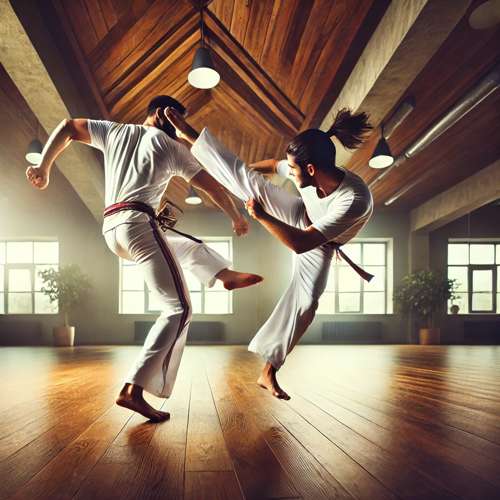
Capoeira
Capoeira (/ˌkæpuːˈɛərə/; Portuguese pronunciation: [kapuˈejɾɐ]) is a Brazilian martial art that combines elements of dance, acrobatics and music, and is sometimes referred to as a game. It was developed in Brazilmainly by African descendants (N’golo, or zebra dance – a kind of dance in which the participant uses their feet to kick the head of their opponent similar to how a zebra moves, hence the name) with native Brazilian influences (Maraná war fight – a kind of fight that they use all their bodies to attack the enemy), probably beginning in the 16th century. It is known by quick and complex moves, using mainly power, speed, and leverage for a wide variety of kicks, spins, and highly mobile techniques; at heart is the ginga (similar to native Indian Brazilian dance until today), the back-and-forth, foot-to-foot movement that serves as the starting point for such leverage. Capoeira used in genuine self-defense situations incorporates many sweeps and low moves, whereas when played as a game there is more emphasis on high moves, demonstrations of acrobatics, full cartwheels (called au) for evasion, and flips or other exotic techniques by mestres (masters), and performing an entertaining match for the audience.
As with its early history, the origins of the word capoeira remains controversial. There is evidence to suggest that the word originates in Angola, where the word “kapwera” is the Bantu verb meaning “to fight”. The word capoeiramay have come from the Tupi language, referring to the areas of low vegetation in the Brazilian interior where the game was played (ka’a (“jungle”) e pûer (“it was”). It was practiced by slaves and disguised as a dance in order to prevent its capoeiristas from punishment or execution for learning how to fight and defend themselves, which was forbidden to those who were legally defined as property. It is nearly always practiced to traditional Brazilianberimbau music.


Follow us:


